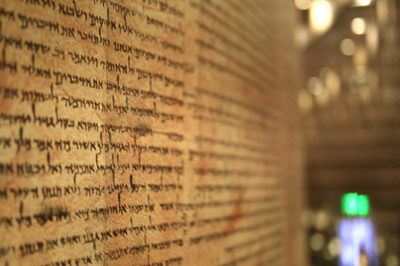in New York holds one of the largest and most famous collections of Egyptian material in the world. Today, it opens a brand-new, long-term exhibition gathering together 170 pieces from within its Egyptian collection titled The Mummy Chamber.
Its an exploration of the many complex ancient Egyptian afterlife rituals and beliefs, which were all intended to protect a deceased soul from harm once they passed-on, and ensure a pleasant experience on the other side. It covers everything from mummification to the placing of votive goods in burial chambers.
Organised by the Brooklyn Museums Curator of Egyptian Art Edward Bleiberg, The Mummy Chamber will feature a number of highly unique artefacts, from mummies to coffins, canopic jars and shabti funerary figurines, plus all kinds of stelae, reliefs, gold earrings, amulets, ritual statuettes and mummy boards.
Chief among the ancient Egyptian antiquities on display will be a section of the Book of the Dead of Sobekmose a nearly eight metre-long, 3000-year-old papyrus acquired decades ago but until now never before placed on public display.
Mummies
No Egyptian exhibition relating to the afterlife would be worth its salt without a few good mummies. The Brooklyn Museum has one of the finest selections of embalmed ancient bodies going, and has cherry-picked a few beauties both human and animal for this display. Theyll include the mummy of Pa-seba-khai-en-ipet, the 21st Dynasty Royal Priest and Count of Thebes, the mummy of Hor, a minor 13th Dynasty Egyptian king, and the mummy of the Thothirdes, a 26th Dynasty priest at Thebes.
Several of the Brooklyn Museums mummies have recently undergone intensive scientific testing including CT-scans to try and learn a bit more about them such as their sex, age, cause of death and living habits. For example, the mummy of Hor was for 70 years displayed as the body of a young female, until a CT-scan in 2009 proved it had all the anatomical features of a man! Details of these and other findings will form part of the installation, as will an insight into just how some of the mummies were embalmed.
The most thorough process of mummification as outlined in this blog involved the removal and preservation of internal organs and a long period of dehydrating the cadaver. It was an expensive business, and not always within the means of a deceased ancient Egyptian. Some exhibits in The Mummy Chamber will be dedicated to highlighting other, cheaper processes of mummification.
Coffins and Grave Goods
Equally as important as the mummification of a corpse itself was the container it was then placed within. Another key part of this Brooklyn Museum special exhibition will be a look at various types of sarcophagi, and the history of coffin-making for humans and animals in ancient Egypt.
The outer sarcophagi of Pa-seba-khai-en-ipet, for instance, reflects a major shift in burial practice in the 21st Dynasty, when the Egyptian elites stopped building elaborate tombs and instead transferred the scenes normally painted on tomb walls to the coffin. Hor, contrastingly, was encased in an elaborately decorated cartonnage (a case made from layers of linen or papyrus covered with plaster). It exemplifies the way that the painters of the Third Intermediate Period made use of the rich iconography available to them.
Even a deceased Egyptians internal organs removed during the mummification process were sometimes preserved in elaborate vessels, such as canopic jars or chests. Alongside the various different types of coffins, examples of these will also be displayed, as will various kinds of ritual objects tools intended to help the deceased overcome the various challenges they were expected to face in the afterlife. Shabtis were one popular such grave good small figurines whom it was believed could serve as servants or slaves in the afterlife. Expect to see lots of great examples of these too.
Essential Reading in the Afterlife
One of the most common artefacts found placed in ancient Egyptian tombs is copies of the so-called Book of the Dead the name commonly given to the ancient Egyptian funerary text Spells of Coming (or Going) Forth By Day. It was meant to assist the deceased on the other side by arming them with a collection of hymns, spells and instructions useful for overcoming whatever perils might face them in the afterlife.
Most commonly, the Book of the Dead was written on a papyrus scroll. The Book of the Dead of Sobekmose will form one of the centerpieces of The Mummy Chamber, and is a particularly impressive example of such an artefact. Covered with text on both sides as well as various illustrations, it was found buried in the grave of Sobekmose a treasurer for Amenhotep III, in the 18th Dynasty. His name recurs frequently throughout the text, accompanied by the title Gold-worker of Amun.
The Brooklyn Museum acquired The Book of the Dead of Sobekmose in 1937, but this will represent the first time its been made available for general viewing. It follows two years of painstaking conservation work to restore it to its former glory. Only a portion of the scroll has been restored so far, but work remains ongoing, and as other sections are made ready theyll be added to the gallery installation.
Been to The Mummy Chamber exhibition at Brooklyn Museum? Tell us what you thought in the comments field below, and share your photographs in the Heritage Key Flickr group.



